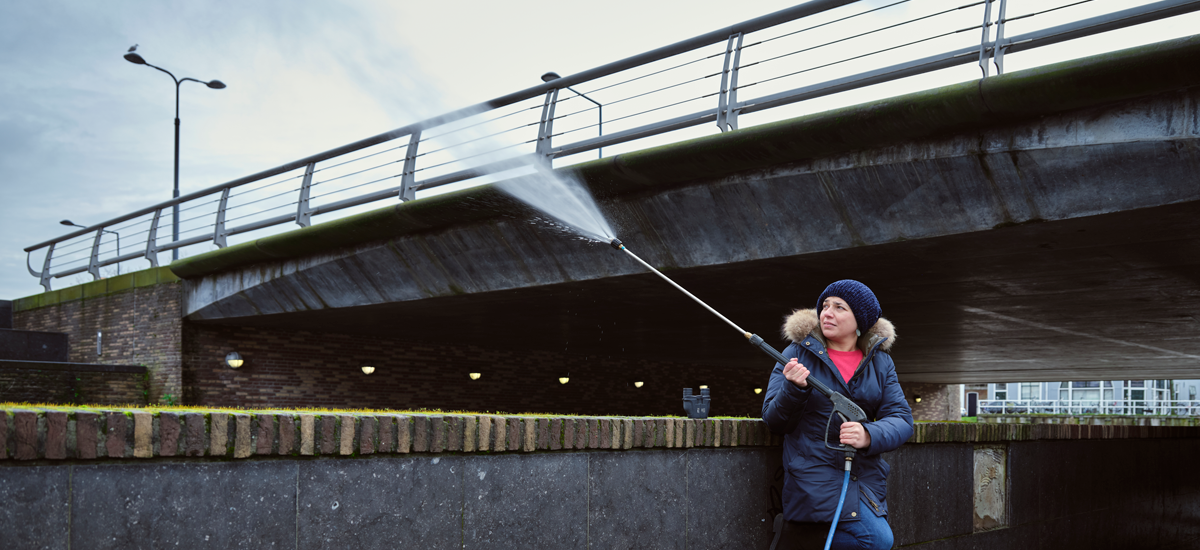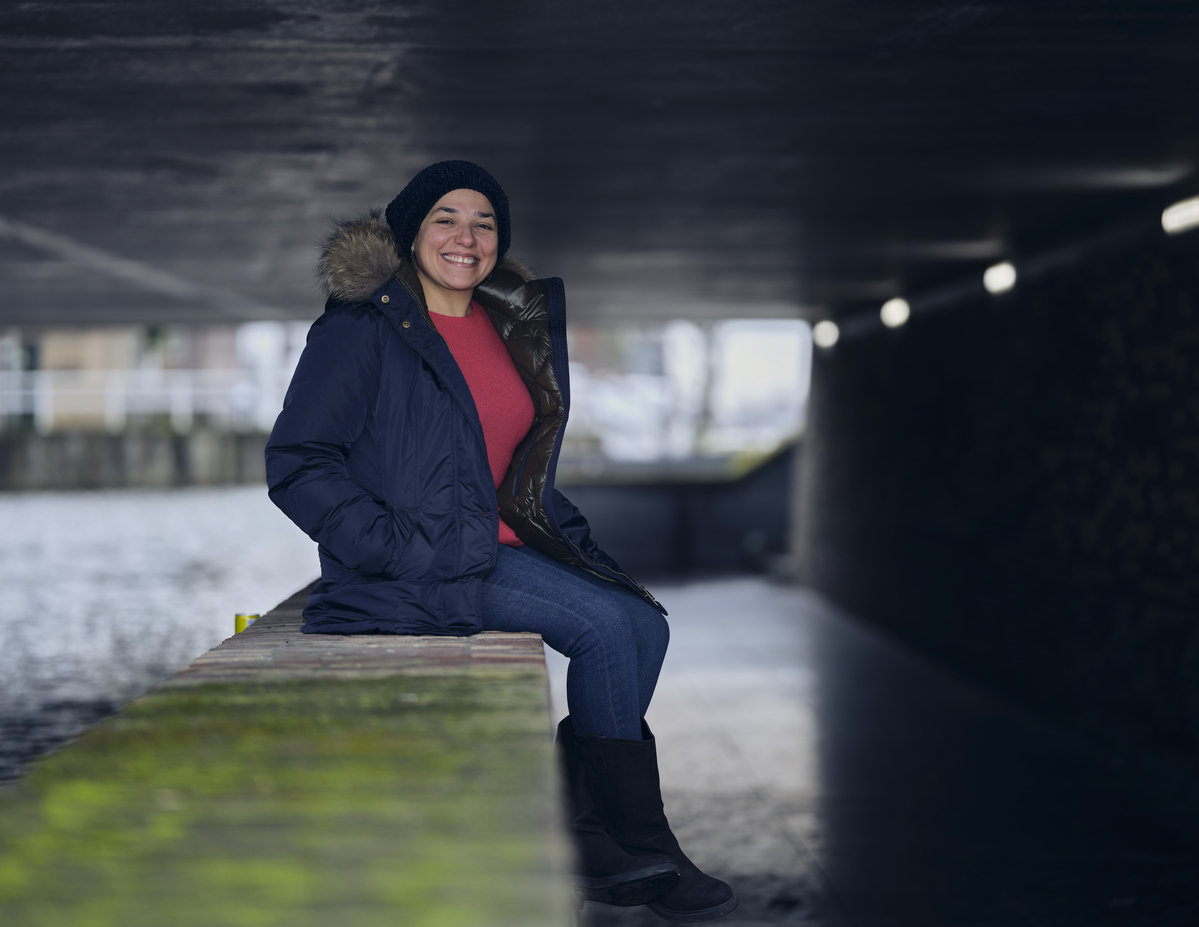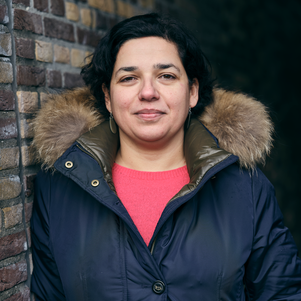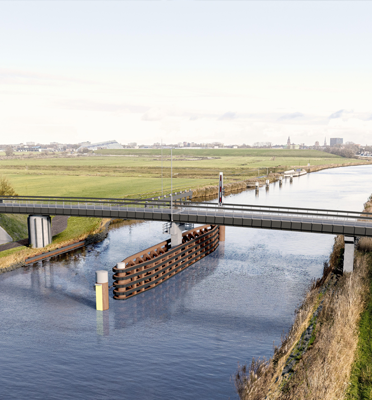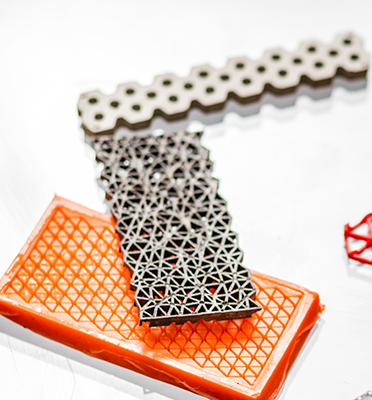Due to poor monitoring, many structures are not maintained properly or on time. This results in safety risks and high costs for overdue maintenance. Researcher Alice Cicirello is working on better design and monitoring tools to ensure the secure construction of structures to extend their service life.
Premature failures of bridges, pipelines, offshore wind turbines or offshore support structures in operation can have severe consequences, such as loss of lives and unforeseen disrupting downtimes which can have safety and economic repercussions. In August 2018 Italy was shaken by the sudden collapse of the Morandi Bridge in Genova. 43 people lost their lives in what was later found to be an avoidable disaster caused by years of deferred maintenance. ‘This tragedy shows the importance of constant monitoring of structures such as bridges,’ associate professor and head of the Mechanics and Physics of Structure section Alice Cicirello says. ‘Proper monitoring will reveal the condition of the bridge so any potential risks or damage can be tackled in time.’
In the Netherlands too bridge maintenance has been found lacking. Recent research showed that the Merwedebrug, closed to traffic in 2016, is on the point of collapsing. In 2018 the Dutch government spent around €400m on the deferred maintenance of bridges.
Failing monitoring systems
Monitoring of engineering structures is carried out by means of sensors which collect data which in turn are used to learn about the condition of the structure,’ Cicirello says. ‘The problem is that these sensors are often in the wrong place, or faulty because of age or damage. That means the data they provide may be incomplete or incorrect. This might cause missed detections of unsafe structural conditions. Moreover, a faulty monitoring system can undermine the reasons for implementing monitoring technologies in the first place. For instance, if a structural problem is wrongly detected with a faulty sensor, the monitoring system will give a false alarm. This would effectively lead to an unnecessary close down of a healthy bridge causing huge detours for traffic. What I want to achieve with my research are better monitoring strategies and design tools which will improve structural performance and longevity. That is a major goal, considering the enormous maintenance and replacement challenge the Netherlands is facing. Many bridges in this country are nearing the end of their life cycle.’
What I want to achieve with my research are better monitoring strategies and design tools which will improve the performance and longevity of structures and infrastructures for transportation, supply of energy and communication which are of critical importance for our society.
Vibrations and other wobbles
Before Cicirello came to Delft in January 2020 she earned a bachelor’s and a master’s degree in Civil Engineering in Italy and a PhD in Mechanical Engineering at the University of Cambridge. She also worked in industry and lectured at the University of Oxford. Cicirello’s research is centred around vibration. ‘Everything around us vibrates. Vibration enables us to hear sound and communicate with each other. But vibration is also a cause of structural defects or noise disturbances, not just in bridges but in cars, wind turbines, drilling tools and all sorts of other engineering devices and objects. So in order to make the engineering structures last longer you have to understand their vibration. The problem is that the dynamic response of a large scale engineering structure made of many components can be very difficult to predict. ‘There will always be a number of uncertainties that influence their behaviour and lifespan. For bridges, these include weather conditions, such as wind speed and temperature, and the impact of traffic.’
Uncertainties
For Cicirello such uncertainties represent not an obstacle but a challenge. ‘In science as in life, we have to face the fact that there are many things that we do not know precisely, and other things that are subject to an inherent variability. Nonetheless we have to make decisions under these uncertainties. The question is not so much how we can control these uncertainties but how we handle them. One of the ways to tackle them is for example to minimise their effect. Robust design can make structures as resilient as possible against the effects of wind speed or heavy traffic which are not fully known at the design stage. A good monitoring strategy will then help to accumulate life cycle data about unforeseen events and external factors so action can be taken.’
Integrated research approach
In 2017 Cicirello set up the Dynamics, Vibration and Uncertainty Research Group at Oxford and started a laboratory to look simultaneously at these various aspects from different angles. She brought this expertise to Delft, where she is setting up the Monitoring, Vibration and Uncertainty Lab. ‘We look at physics, build mathematical models, experiments, quantify uncertainties and use machine learning techniques. An integrated approach is important because it gives us a comprehensive picture of the behaviour of the whole of the structure. Without experimenting, for instance, you won’t know if the assumptions in the model are correct. And we need monitoring and machine learning to collect and process data that will help us learn the behaviour of the structures during operating conditions,’ Cicirello says.
A digital copy of reality
An integrated approach, Cicirello explains, will help engineering structures last longer. ‘It starts with the collection of information about the structure, its shape, material and environment. Based on this information, a representative computer model of a structure is build. This acts as a virtual replica of the structure, the so-called digital twin, which enable us to explore the performance of the structure before it is built and also during its life cycle. For example, a digital twin of a bridge can be developed. We can then take into account for uncertain elements, such as strong winds or heavy traffic. That will flag up the critical and vulnerable spots in the bridge. This not only helps promote robust design but also determines where the monitoring sensors should be placed. Once the bridge is in use you can use the data provided by the sensors to update the digital twin, enabling ever more accurate life cycle predictions.’
Advantages
Robust design and better bridge monitoring come with a number of advantages, Cicirello says. ‘The main thing of course is to keep people safe. We have only to think of the lives lost in the Morandi Bridge collapse. A better understanding of the vulnerable spots also ensures that maintenance is carried out at an early stage and in the right places. It is also money saved as preventive maintenance is much cheaper than deferred maintenance. The digital twin approach also extends the life cycle of the structure which saves on materials and energy and so benefits the environment. Better monitoring also prevents avoidable delays caused by false alarms.’
Partners
For her research Cicirello has partnered up with a number of parties in the field, such as the ministry of water management and infrastructure Rijkswaterstaat. ‘Rijkswaterstaat is responsible for the monitoring and management of many critical structures in the Netherlands. Together we look at how their current monitoring system can be improved. Where are the best spots to put the sensors, how do we prevent the failure of the monitoring system and how do we determine when maintenance and repair work should be carried out? We hope that within five to ten years we will have a number of effective tools in place to make effective monitoring happen in practice.’
